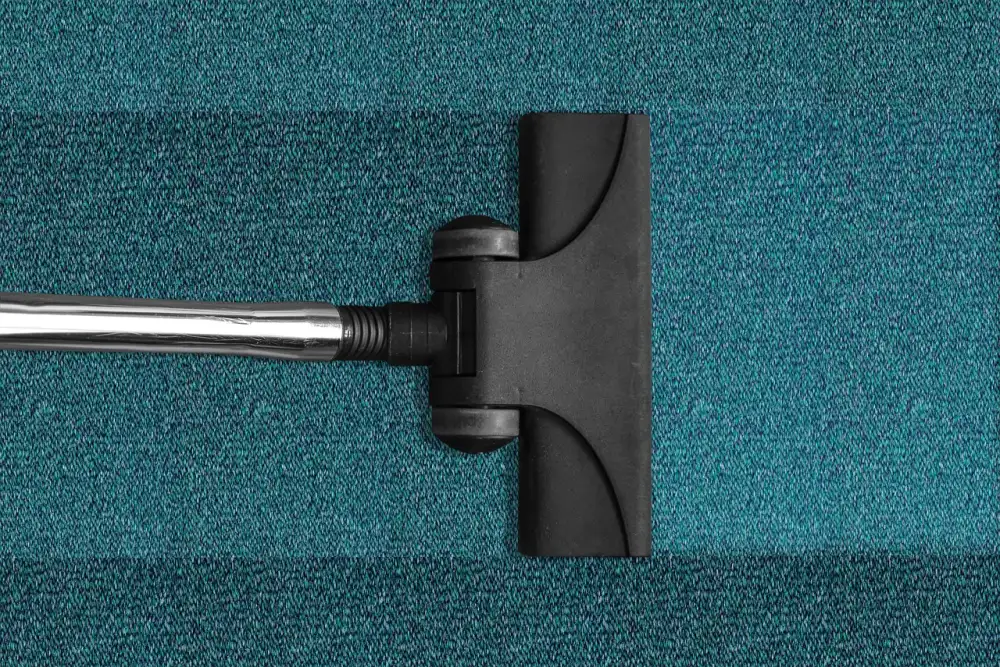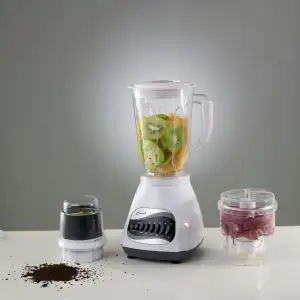Preserve Freshness and Flavor at Home: Discover the Magic of Envasadora al Vacío

- Benefits of using a vacuum sealer at home
- How a vacuum sealer works
- Different types of vacuum sealers available for home use
- Tips for choosing the right vacuum sealer for your needs
- Step-by-step guide on using a vacuum sealer
- Creative ways to use a vacuum sealer in the kitchen
- Maintenance and care for your vacuum sealer
A vacuum sealer is a revolutionary kitchen appliance that helps preserve the freshness and flavor of food for extended periods. It works by removing air from specially designed bags or containers, creating an airtight seal that prevents the growth of bacteria and slows down spoilage. This innovative technology has gained popularity among home cooks and food enthusiasts who want to extend the shelf life of their ingredients without compromising on taste or quality. With a vacuum sealer, you can now enjoy the benefits of professional food preservation right in your own kitchen.
Benefits of using a vacuum sealer at home
Using a vacuum sealer at home offers numerous benefits for preserving freshness and flavor. Firstly, it extends the shelf life of food by removing air and preventing the growth of bacteria, mold, and yeast. This means that your fruits, vegetables, meats, and dairy products will stay fresh for longer periods.
Secondly, a vacuum sealer helps to prevent freezer burn. By sealing food in an airtight bag, it protects against moisture loss and oxidation that can occur in the freezer. This ensures that your frozen items retain their taste, texture, and nutritional value.
Additionally, vacuum sealing allows you to buy food in bulk or take advantage of sales without worrying about spoilage. You can portion out larger quantities into smaller servings and seal them individually for future use.
Moreover, using a vacuum sealer helps to save money by reducing food waste. With proper sealing, leftovers can be stored safely for extended periods without losing their quality. This means fewer trips to the grocery store and less wasted food.
Lastly, a vacuum sealer is not only useful for preserving food but also for marinating meat or infusing flavors into ingredients quickly. By removing air from the bag during the marinating process, the flavors penetrate deeper into the food resulting in more flavorful dishes.
In conclusion, investing in a vacuum sealer brings several advantages such as prolonging the freshness of your food, preventing freezer burn, reducing waste and saving money on groceries. It also opens up new possibilities for enhancing flavors in your culinary creations.
How a vacuum sealer works
A vacuum sealer works by removing air from the packaging, creating a tight seal that preserves freshness and flavor. The process involves placing the food or item in a specially designed bag or container, and then using the vacuum sealer to remove the air inside. This prevents oxidation and slows down the growth of bacteria, extending the shelf life of the food. The vacuum sealer uses a pump or motor to create suction, which removes the air and seals the bag or container. Some vacuum sealers also have additional features like adjustable sealing time and pressure settings for different types of food. Overall, this simple yet effective technology helps to maintain the quality and taste of your food for longer periods of time.
Different types of vacuum sealers available for home use
There are several types of vacuum sealers available for home use, each with its own unique features and benefits. One popular type is the handheld vacuum sealer, which is compact and portable, making it ideal for small kitchens or for those who want to take their vacuum sealer on the go. Another option is the countertop vacuum sealer, which is larger and more powerful, allowing for faster sealing and a wider range of food preservation options. Additionally, there are chamber vacuum sealers that are commonly used in professional kitchens but can also be found in some homes. These models offer a higher level of vacuum pressure and are suitable for sealing liquids and delicate foods. When choosing a vacuum sealer for your needs, consider factors such as size, power, versatility, and budget to find the best option for you.
Tips for choosing the right vacuum sealer for your needs
When choosing a vacuum sealer for your needs, there are a few key factors to consider. First, determine the size and capacity you require. If you plan on sealing large quantities of food or bulky items, opt for a sealer with a wider sealing strip and larger bag capacity.
Next, consider the sealing strength and durability of the machine. Look for models that offer adjustable sealing options to accommodate different types of bags and ensure a secure seal every time.
It's also important to think about the versatility of the vacuum sealer. Some models come with additional features such as built-in bag cutters or roll storage compartments, which can make the sealing process more convenient.
Another factor to consider is the maintenance requirements of the machine. Look for sealers that are easy to clean and maintain, with removable drip trays or dishwasher-safe components.
Lastly, don't forget to check customer reviews and ratings before making your final decision. This will give you insights into the performance and reliability of different models.
By considering these tips, you can choose a vacuum sealer that meets your specific needs and enhances your culinary experience at home.
Step-by-step guide on using a vacuum sealer
1. Prepare your food: Ensure that the food you want to seal is clean, dry, and free from any excess moisture or liquids. This will help maintain the quality and freshness of the food.
2. Place the food in a vacuum-seal bag: Place the food items you want to preserve inside a specially designed vacuum-seal bag. Make sure not to overfill the bag, as this can affect the sealing process.
3. Seal one end of the bag: Place one end of the bag into the vacuum sealer machine and close it securely. Most vacuum sealers have an automatic sealing function, so simply press the appropriate button or follow the instructions provided by your specific model.
4. Remove air from the bag: Once one end of the bag is sealed, place the open end into the machine's suction area. Activate the vacuum function to remove all air from inside the bag. This will help prevent oxidation and freezer burn.
5. Seal the other end of the bag: Once all air has been removed, quickly seal off the remaining open end of the bag using your vacuum sealer's sealing function.
6. Check for a secure seal: After sealing both ends of the bag, gently press on it to ensure there are no leaks or loose seals. A properly sealed bag should be airtight and firm to touch.
7. Store or cook your sealed food: Depending on your needs, you can now store your vacuum-sealed food in either a refrigerator or freezer for extended shelf life. Alternatively, you can also cook your sealed food directly without opening it first, as many vacuum-seal bags are safe for sous vide cooking.
By following these simple steps, you can effectively use a vacuum sealer at home to preserve freshness and flavor in your favorite foods for longer periods of time.
Creative ways to use a vacuum sealer in the kitchen
1. Marinating: Vacuum sealing allows for quick and efficient marinating. By sealing your meat or vegetables with marinade, the flavors penetrate deeply, resulting in tender and flavorful dishes.
2. Sous vide cooking: Vacuum-sealed bags are perfect for sous vide cooking. The airtight seal ensures even heat distribution, preserving the natural juices and flavors of your ingredients for restaurant-quality meals.
3. Extended freshness: Extend the shelf life of delicate herbs by vacuum sealing them. This technique helps retain their vibrant colors and intense flavors much longer than traditional storage methods.
4. Preparing make-ahead meals: Vacuum sealing individual portions of pre-cooked meals allows for easy meal planning and preparation. Simply reheat the sealed bag when ready to eat for a convenient and delicious homemade meal.
5. Infusing oils and spirits: Create unique flavored oils or infused spirits by vacuum sealing herbs, spices, or fruits with your chosen base liquid. The vacuum process accelerates the infusion process, resulting in intensely aromatic concoctions.
6. Preserving leftovers: Avoid food waste by vacuum sealing leftover meals or ingredients. By removing air from the packaging, you can significantly extend their freshness and prevent freezer burn.
7. Organizing pantry staples: Keep dry goods like rice, flour, or cereal fresh by transferring them to vacuum-sealed bags or containers. This method helps protect against moisture, pests, and oxidation while maximizing storage space.
8. Protecting non-food items: Vacuum sealers are not limited to culinary uses only! Safely store important documents, jewelry, or camping gear by vacuum sealing them to protect against moisture damage or pests.
These creative uses demonstrate how a vacuum sealer can enhance your culinary experience while providing practical solutions for food storage and organization in the kitchen
Maintenance and care for your vacuum sealer
To ensure the longevity and optimal performance of your vacuum sealer, regular maintenance and proper care are essential. Here are some tips to keep your machine in top shape:
1. Clean the sealing area: After each use, wipe down the sealing area with a damp cloth to remove any food particles or liquids. This will prevent buildup and ensure a tight seal.
2. Check the gaskets: The gaskets on your vacuum sealer play a crucial role in creating an airtight seal. Inspect them regularly for any signs of wear or damage. If needed, replace them to maintain the effectiveness of your machine.
3. Empty and clean the drip tray: Many vacuum sealers come with a removable drip tray that collects excess liquids during the sealing process. Empty and clean this tray regularly to prevent bacteria growth and maintain hygiene.
4. Lubricate moving parts: Some vacuum sealers have moving parts that require lubrication to function smoothly. Refer to the manufacturer's instructions on how to properly lubricate these parts, if necessary.
5. Store it properly: When not in use, store your vacuum sealer in a cool, dry place away from direct sunlight or extreme temperatures. This will help prolong its lifespan and prevent any damage.
6. Follow manufacturer's guidelines: Always refer to the user manual provided by the manufacturer for specific maintenance instructions tailored to your model of vacuum sealer.
By following these maintenance tips, you can ensure that your vacuum sealer remains in excellent condition, allowing you to continue preserving freshness and flavor in your culinary adventures at home.
In conclusion, investing in a vacuum sealer for your home kitchen can greatly enhance your culinary experience. By preserving the freshness and flavor of your food, you can enjoy meals that taste as if they were just prepared. The benefits of using a vacuum sealer are numerous, including preventing freezer burn, extending the shelf life of perishable items, and reducing food waste.
With various types of vacuum sealers available on the market, it is important to choose one that suits your needs. Consider factors such as size, functionality, and price when making your selection. Additionally, following a step-by-step guide on using a vacuum sealer will ensure optimal results.
The versatility of a vacuum sealer extends beyond just sealing food. Get creative in the kitchen by using it to marinate meats faster or even infuse flavors into liquids. The possibilities are endless!
To maintain the longevity of your vacuum sealer, regular maintenance and care are essential. Clean the machine after each use and store it properly to prevent any damage.
In conclusion, a vacuum sealer is an invaluable tool for any home cook looking to preserve freshness and flavor in their meals. By investing in this magical device, you can elevate your culinary creations to new heights and truly experience epicurean dreams come true.
Published: 04. 03. 2024
Category: Home



